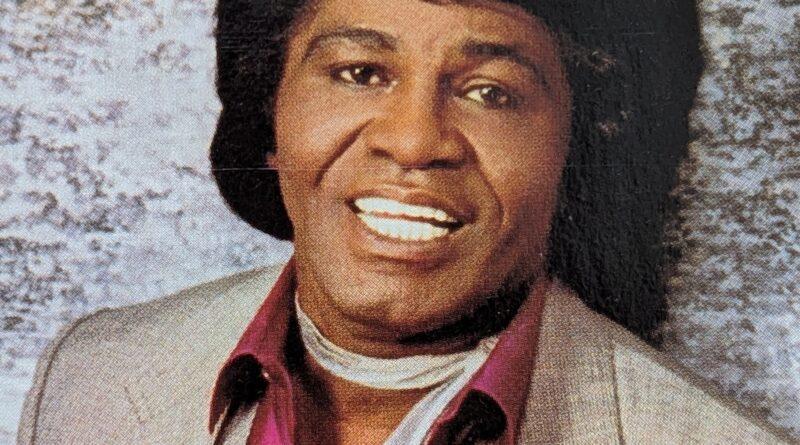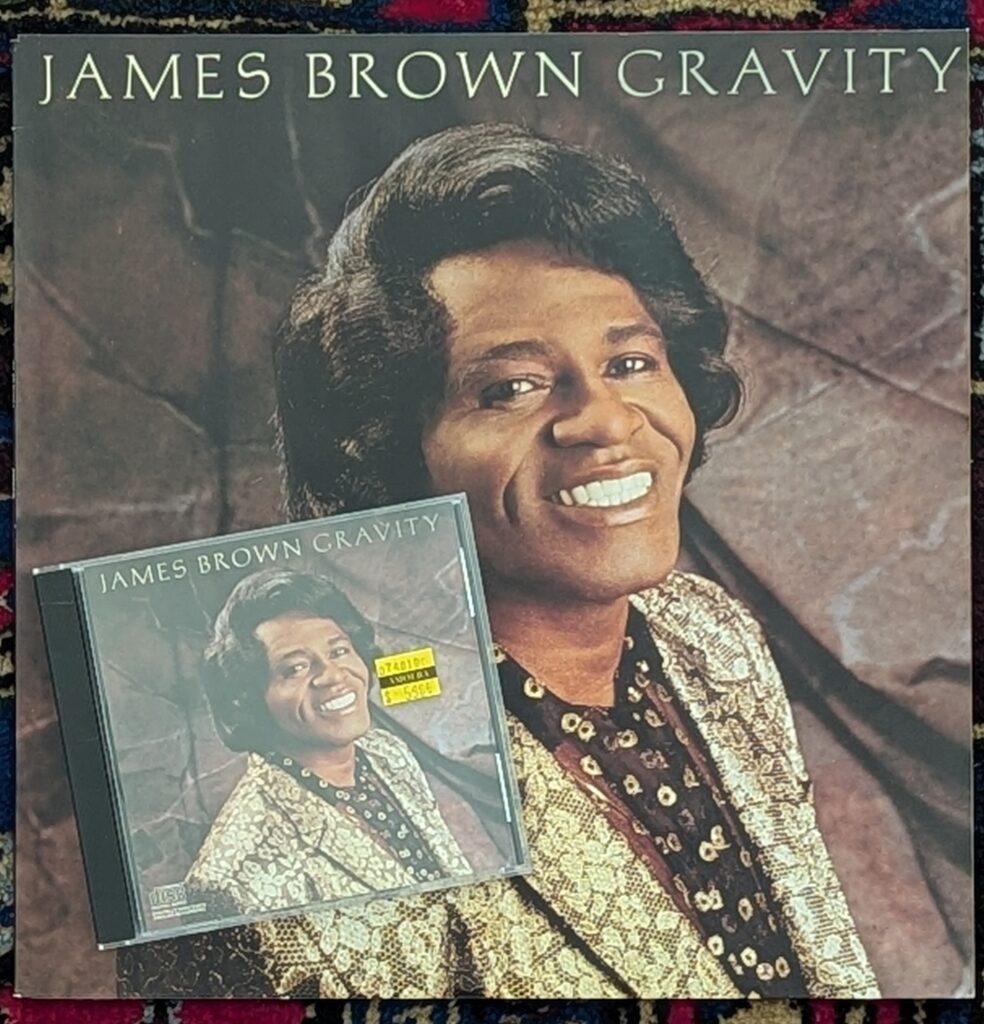Hit it! James Brown’s “Gravity” album a timeless ’80s classic
Back in the 1990s, the wry joke among music fans was that our CD acquisitions were mostly forced repurchases of our old LPs and cassettes. Fast forward to 2025 and I’m still doing that, having finally given up any hope of replacing the hopeless Audio-Technica turntable and the squeaky Yamaha tape deck that I binned around the turn of the century.
Recent digital “upgrades” have included John Lee Hooker’s Alone live album, a Jackie Wilson compilation, the first Terence Trent D’Arby record, and the James Brown comeback Gravity. Yes, it’s 100% nostalgia. I know I should be digging the new breed, but I’ve turned into my parents at this point. There’s not much bandwidth left. I originally bought the aforementioned records as new releases or reissues between 1986 and 1988, a challenging time in my late teens when I thought I had it all worked out but didn’t. They were soulful refuges alongside other “new” music from the likes of fresh discoveries like Otis Redding, Jimi Hendrix and Marvin Gaye.
The James Brown album — in my tiny world, at least — was a monster. The local newspaper critic proclaimed Gravity a return to form for Brown at the ancient age of 53, and I bought it immediately upon its release in late 1986. It was my first JB album. To my voracious ‘80s ears, Gravity was crucial pop-funk. It was a free workout, if one so desired (see below), or one could just tap one’s toes and sing along because it felt like a private show in the bedroom or car.

I already knew two of the eight tracks: the Grammy-winning hit “Living in America,” which had shown up in a Rocky sequel the year before; and the title track, whose video I must have watched hundreds of times over the years. Every step, every beat is ingrained: the Star Wars-style opening crawl, the impeccably groomed and choreographed musicians, the venerable aide-de-camp Danny Ray in powder-blue tux, and Brown with the world’s shiniest shoes doing the splits.
That left six new songs for me to digest, the best of which were the hyperkinetic “Turn Me Loose, I’m Dr. Feelgood” and the wrenching ballad “How Do You Stop?” Great funk, great fun. (There’s only one song I’d have jettisoned, the “of its time,” synth-heavy “Let’s Get Personal,” featuring Alison Moyet.)
But this sensual experience was almost 40 years ago. When people mention ’80s music, the word “suck” is invariably invoked. And yes, it was an unkind decade for many veteran acts. People who should have known better were unable to resist the slickness of the new digital age: synthesizers, drum machines and equally loud fashion choices. So how would Gravity hold up in 2025?
The portents weren’t good. I remembered some raised eyebrows at the time regarding the album’s mastermind, the late Dan Hartman, who had a diverse CV but was best known to the masses for his pop hit “I Can Dream About You.” (For more on Hartman, an unrecognised genius, read Larry Portzline’s interview with him here.)
Moreover, Brown had no role in the songwriting or production. Hartman recorded the basic tracks at his studio in Connecticut, and Brown overdubbed most of his vocals — lyrics written by Charlie Midnight — 50 miles away in a Manhattan studio that coincidentally was a hip-hop hotspot. It seemed a little inorganic. But you would only know all this if you had read the LP’s production notes, which did not survive the transition to the American CD.
Before heading down to Amoeba Records in Hollywood to part with my hard-earned $5.49 for a used CD copy of Gravity, I tried to elicit the current interpretation. More blah than anything. The album, long out of print, seemed forgotten. The guy on Allmusic said “moderately interesting” here and “above average” there, but it “had the sound and feel of Brown trying to catch up with contemporary trends.” Wikipedia claimed the album received a lukewarm reception from critics, citing the Allmusic guy and Robert Christgau.
The 1992 edition of the Rolling Stone Album Guide gave Gravity 3.5 stars (out of five): essentially, “Brown was just imitating himself,” wrote J.D. Considine. In a Mojo piece in 1998, Barney Hoskyns described “Living in America” as “a travesty of the funk Brown had invented,” even if it boosted his career for a couple of years. (But he noted that “How Do You Stop?” was “so affecting, so resonant.” The album failed to make Mojo’s top 10 Brown releases, but that’s a tough field.
I didn’t recall such a qualified reaction at the time, so perused the papers from 1986. Some publications were torn, as you might expect. Creem’s Jon Young said the album was “ultimately a tad depressing” on account of the Hartman factor, but that it “does deliver solid entertainment” and it was “better to have James back this way than not at all.” A New Zealand critic, Tony Green at The Press, echoed those sentiments writing, “for making even average grooves sound fun, James Brown deserves his Godfatherhood for another year or so.”
But there was definitely a bullish trend:
“[Gravity] successfully [updates] Brown’s traditional perspiration value with only the necessary minimum of pop production value . . . the hopped up grunting ‘n’ groaning delivers the goods here .” — Los Angeles Times, Chris Willman, Sept. 28, 1986.
“It is a delightful record. It vindicates Mr. Hartman, who has been responsible for some trivial pop hits and has not been popular with the critics, and it vindicates Mr Brown who was never comfortable with the idea of becoming a museum piece . . . In more ways than one Gravity is a triumph.” — New York Times, Robert Palmer, Oct. 1, 1986.
“The Godfather jams down hard with contemporary adaptation of his stone funk. Tight charts, throat-searing vocals, stabbing riffs — it’s not new but it’s always hot.” — Billboard, Oct. 4, 1986.
“[Gravity] categorically reinstates the old troubadour as a contemporary force with which to be reckoned . . . Brown exudes a new confidence in every nuance of his performance.” — The Times, David Sinclair, Oct. 18, 1986.
“In its best moments, Gravity serves as the same kind of artistic re-affirmation for Brown that Private Dancer was for Tina Turner.” — Los Angeles Times, Robert Hilburn, Oct, 19, 1986
“JB serves notice that with the proper material and backing he can still tear it up, still make the youngsters pay both notice and respect . . . The album can hold its own with any funk album currently on the market, proving that the man who invented the game can still play it.” — Houston Chronicle, Patrick Ercolano, Dec. 14, 1986.
So that’s that, then. My teen memories validated, I graced Amoeba with my presence, took pity on the wretched souls who had decided they no longer needed Gravity in their lives — and grabbed one of the orphans for its new forever home. To paraphrase JB, I felt good, even if I’m always disappointed never to receive just the slightest raised eyebrow of admiration from the Amoeba clerks. Back home, the disc went immediately into the slot, and the timeless spoken intro issued forth.
“In the 21st century,” Mr. Brown tells us, like he recorded it last year, “you can dance. Get your feet off the ground, if you can jump. And if you believe, then you can fly. And if a man can dream, then he can defy. Hit it! Gravity!! Yeah!!!”*
And so it goes for almost 40 minutes — a reminder of a simpler time before “CD bloat” kicked in. Everything’s real — the horns, the bass, the pompadour and the passion. The sound is big but not overbearing. Hartman could have filled every space with extra notes and programmed flourishes, but he lets the music breathe. Most of all, he ensures that there’s only one star — the guy on the cover brandishing the blinding smile. Hartman has given him the confidence and the support he needs at the end of a lackluster decade. And if JB is having fun, so are we. The songs flow energetically as if they’re being spun by a DJ at your local boozer, the perfect mix of mostly fast with a few slow. I could go on but, man, I’m gonna party like it’s 1986.
(* Lyrics supplied to me by the man who wrote them, Charlie Midnight. Don’t believe what you see elsewhere online. “Get the dummy”?? C’mon, man.)
NOTE: If James and I made you “feel good,” try my gossipy rock bio Strange Days: The Adventures of a Grumpy Rock ‘n’ Roll Journalist in Los Angeles, available here. For more info, go to strangedaysbook.com
Copyright © 2025 by Dean Goodman. PLEASE DO NOT CUT AND PASTE THE WHOLE THING

